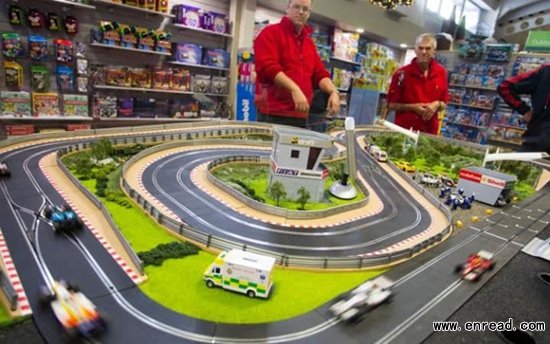For Rob Willner, when work finishes, playtime begins. He likes nothing more when he gets home of an evening, than to kick off his shoes and upturn1 a crate2 of sleek3 Scandinavian Lego.
对于罗布·维尔纳来说,工作结束以后,游戏时间就开始了。傍晚下班回到家,踢掉鞋子,搬出酷炫的丹麦乐高积木箱,这就是他最幸福的时刻。
"It's not like I'm
obsessed4 with it, but there's a
simplicity5 to Lego models that's quite nice - to clear your mind and help it focus a bit," he says, only a touch sheepishly.
Willner is 25 years old, and combines studying for a PhD in
anthropology6 and religion at the University of Kent with youth work in north London, where he lives with his wife, Adele, a teacher. And he is not alone in his childish after-work habits.
According to new research conducted by NPD Group, a
retail7 analyst8, sales of toys to adults have increased by almost two thirds over the past five years, and by more than 20 percent in just the last year. As a result, the 'toys for adults' market (which, by the way, is a careful Google search, best done at home) is now worth £300m - and said to be growing three times faster than the children's toy market itself.
As with most things, millennials are largely to blame. More than half of the 'kidult' spend comes from 18 to 34-year-olds, snapping up everything from £500 Scalextric sets to drones, Nerf guns and £2,00 Star Wars Lego models.
For some it's a chance to recapture the careless
raptures9 of childhood, while for others it's a chance to escape the hassle and hardships of adult life -
akin10 to other 'mindfulness aids' like adult colouring books and dot-to-dot. For Willner, it's both.
"It reminds me of the playful side of life, but also helps me to keep perspective. Lego isn't transcendent, but it's fun, and gives you a chance to think about what's really important."

 收听单词发音
收听单词发音 


